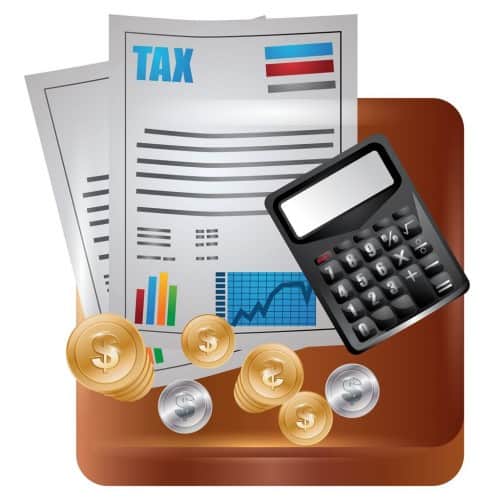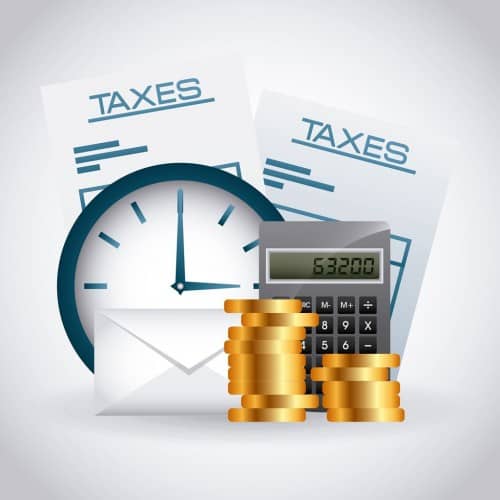Singapore is known to have one of the lowest taxes globally. Supported by world-class infrastructure and a booming business industry, the country has made itself appealing to investors and foreign employees while equally keeping its tax system agreeable to its citizens.
Among the taxes levied by the city-state is the Goods and Services Tax (GST). This type of tax is paid when money is spent on goods and services including imports. A multi-stage tax, the GST is collected at all stages of the production and distribution chain.
Understanding Singapore GST Tax

The GST tax was first applied in Singapore on 1 April 1994 at 3%. It was initially introduced to help Singapore shift its reliance to indirect taxes rather than direct taxes. Throughout its application, it was able to help the city-state maintain a low income tax rate. Since it is a tax on consumption instead of being applied on the income, it also helps encourage savings and investments because it allows the Government to lower corporate income taxes which in turn encourage more foreign direct investment.
In 2003, the rate was increased to 4%, then 5% the following year. The last time the tax requirement was increased was back in 2007 at 7%.
Duties and Dutiable Goods
All dutiable goods manufactured in or imported into Singapore are subject to either customs duty and/or excise duty. By definition, customs duty is a levied on goods that are imported on Singapore while excise duty applies to those manufactured in or imported into the country.
Both duties are computed according to ad valorem rates or the rate of the percentage of goods according to customs value. The specific rate set is computed according to the specified amount per unit of quantity or weight of the product.
There are four types of dutiable goods. All other products that do not fall under the following categories are non-dutiable:
- Intoxicating liquors
- Tobacco products
- Motor vehicles
- Petroleum products
For goods that are imported into Singapore through ordinary mail, Speedpost, or parcel post, a GST based on CIF (cost, insurance, and freight) will be applied. Note that the postage the receiver paid for the goods can be considered as insurance and freight charges.
However, there is no need to pay for GST (unless the product is dutiable) if its CIF value does not exceed $400.
A Closer Look At The GST Act

Singapore GST falls under section 7 of the GST Act. According to law, GST should be applied to the supply of goods and services as well as the importation of goods.
In order for the GST to be considered chargeable on goods and services, four conditions should be met. First, the product should be made in Singapore, the supply should be considered taxable supply, the goods should be made/manufactured by a taxable person and the supply was created in the course or furtherance of the business of the taxable person.
There are some transactions that are considered neither a supply of goods nor a supply of services even though they are made for consideration. One example is when the transfer of business is done as a going concern, meaning that the business is transferred to someone. In this case, the transaction will be considered exempted from GST.
On the other hand, there are also transactions that are considered supplies under the GST law despite having no consideration involved. These goods or supplies are defined as deemed supplies and include private use of goods and distribution of business goods (e.g. as gifts or samples).
Who is required to register for GST?
Companies or business owners that meet the following terms are required to apply for GST:
If the taxable turnover at the end of the calendar quarter and the past three quarters exceeds $1M. To easily monitor registration liability, use this registration calculator).
Those with a taxable turnover for the next 12 months that do not go over $1M are required to provide proper documentation to not be considered liable for registration at the end of the quarter. Nonetheless, the business owner should regularly monitor his or her taxable turnover at the end of each quarter.
However, if the business owner expects that their taxable turnover will exceed $1M over the next 12 months (e.g. if there are prior signing of business agreements of sales contracts), the person should monitor if their taxable supplies will exceed $1M in the next year.
In the event that a business owner meets the criteria for GST registration but his/her taxable turnover is mainly collected from zero-rated supplies, he/she can lobby to be exempted from registration. To apply for this exemption, complete the GST F2 Application for Exemption from Registration and submit it with all the stated documents in the form. Successful applications will be notified by the Comptroller.
Businesses/business owners successfully exempted from GST have to continuously monitor if they will have a material change in the nature of their supplies or material change in any quarter in the proportion of zero-rated taxable supplies. If there are changes in the material, the business owner should notify the GST Comptroller within 30 days that the change occurred or within 30 days of the end of the quarter.
How are Business Turnover and GST Computed?
There are three ways in which the business taxable turnover can be computed. The following categories are below:
Sole-Proprietorship (Individual)
- Combine the turnover of the businesses with the income garnered from the trade, vocation, or profession.
Partnership
- Combine all the turnover of the businesses involved in the partnership with the same composition of partners.
Company
- Compute the turnover of the company. If the company owns a sole-proprietorship business, combine the turnover the company and all the businesses under sole-proprietorship.
In terms of GST registration for sole-proprietorship, all businesses under that category will be registered under the same GST, including future businesses that an individual may set up in the future. In contrast, partnerships will be separately registered under their own names. Once the partnership has been legally registered, all businesses with the same partners also need to be registered, including businesses (with the same partners) that might be created in the future. Private companies will all be GST-registered under the company name.
GST is calculated based on the customs value of goods and duties or with the value of the last selling price plus duties of the goods if there is one more sale done.
Easy Payment Options for GST Collection
GIRO is mostly the preferred mode of payment for GST because taxpayers do not need to worry about payment due dates. The GST is payable within one month after the end of the GST accounting period of the business, with the GIRO deduction applied on the 15th of the month after the payment due date.
Electronic payment modes can also be used to pay for GST. The taxpayer can use internet banking, the DBS PayLah! Mobile App, phone banking, ATM, SAM Kiosk, SAM Online Platform, and the AXS Station and Online Platform. Other options are Cash/NETS, Cheque/Cashier’s Order, and Telegraphic Transfer.
Output Tax and Input Tax Credits: Know The Difference
Input tax can be incurred when purchasing from GST-registered suppliers or importing goods into Singapore. It can be claimed given that the taxpayer meets the required conditions. Note that the input tax can be claimed during the accounting period stated in the tax invoice or import permit. The following are the conditions for claiming input tax:
- If the taxpayer is GST-registered
- If the goods or services in question were supplied or imported by the taxpayer
- If the goods or services will be used by the taxpayer’s business
- If the local purchases are supported by valid tax invoices addressed to the taxpayer or simplified tax invoices issued at the time of claiming
- If the input tax can be directly attributed to taxable supplies or out-of-scope supplies (which are considered taxable if they are made in Singapore)
- If the import is supported by permits verifying that the taxpayer is the importer of goods
- If the input tax claims are not disallowed under GST’s Regulation 26 and 27
Output tax, on the other hand, is a type of GST that is collected and charged by GST-registered businesses from their customers. This type of tax is paid to IRAS. To compute the GST to be paid or refunded from the GST Comptroller, follow the formula below:
GST Collected from customers (Output Tax) – (GST paid on expenses and purchases for the business (Input tax) = Net GST
If the net GST is positive, meaning that the output tax is bigger than the input tax, the taxpayer has to pay this amount to the IRAS. However, if the net GST is negative (with the input tax bigger than output tax), then the IRAS has to return this amount to the taxpayer.
GST Schemes For Business Owners and Investors

1. Major Exporter Scheme (MES)
This scheme helps to ease cash flow of businesses that substantially import and export goods. Under normal law, businesses are required to pay GST upfront on imports and just obtain refunds from the IRAS after submitting their GST returns. Businesses with MES can import non-dutiable goods with GST suspended. These businesses can also have GST suspension on goods from a Zero GST warehouse.
2. Import GST Deferment Scheme (IGDS)
Under the IGDS, businesses that are GST-registered can defer their import GST payments until their monthly GST returns are due. This scheme aims to ease the import GST cash flow that usually results from the time lapse between the import GST payment and the claiming of import GST for GST-registered businesses.
3. Hand-Carried Exports Scheme (HCES)
This scheme is applicable for taxpayers who want zero-rate on their supplies to overseas customers for goods hand-carried out of Singapore through the Changi International Airport. This scheme, however, is not applicable to goods hand-carried out of the country by sea, land, or Seletar Airport. All export evidence is required under this scheme.
4. Approved Refiner and Consolidator Scheme (ARCS)
Approved refiners and consolidators can enjoy specific benefits which include GST suspension on additional input tax benefits and qualifying imports under this scheme. Benefits of GST registration under this scheme are the ease cash flow and compliance of qualifying refiners and consolidators (investment on previous metals in their GST payment on import and purchasing of raw materials). It also relieves input tax placed on refining activities.
5. Approved Marine Customer Scheme (AMCS)
Taxpayers approved under this scheme can enjoy zero-rating on purchases, rental of goods, and maintenance and repair of services on ship parts or components under qualifying conditions. This is provided that the goods are used for storage of fuel, installation, or use in maintenance and the operation of an internationally bound commercial ship. It also applies to goods acquired by the AMC (purchase or rental) during the course of its business. Moreover, it can prove to be useful for maintenance and repair services of ship parts/components since it removes the need to prove that said parts are returned or reinstalled onto the ship as spare.
6. Specialised Warehouse Scheme (SWS)
This scheme applies on warehouses that are used for providing specialised storage facilities to individuals granted that most of the qualifying stored goods will eventually be exported. Examples of qualifying services besides from storage are auction, valuation services, broking, and for storage of precious metals, stones, and works of art. It also encompasses the lease, tenancy, as well as the license to occupy storage space in an ASW.
Understanding GST can be as complex as applying for it. For this, getting a third-party provider to manage and help with the accounting and tax services of the business can prove to be useful especially when it comes to timely income tax filing. Services like these can give business owners have a better understanding of GST terms to make sure that every process and detail of this area of their business is well-covered.
Let Us Assist You
We provide reliable, cost-effective tax and accounting services for your business in Singapore. Schedule a free consultation with one of our specialists.
